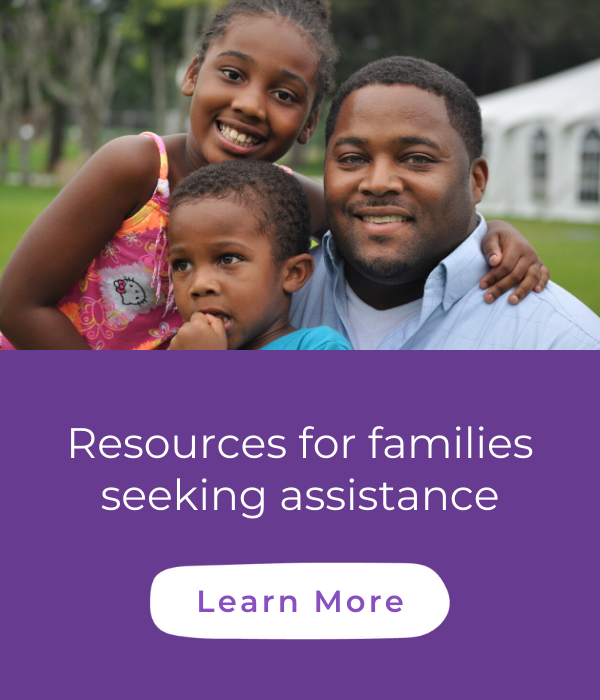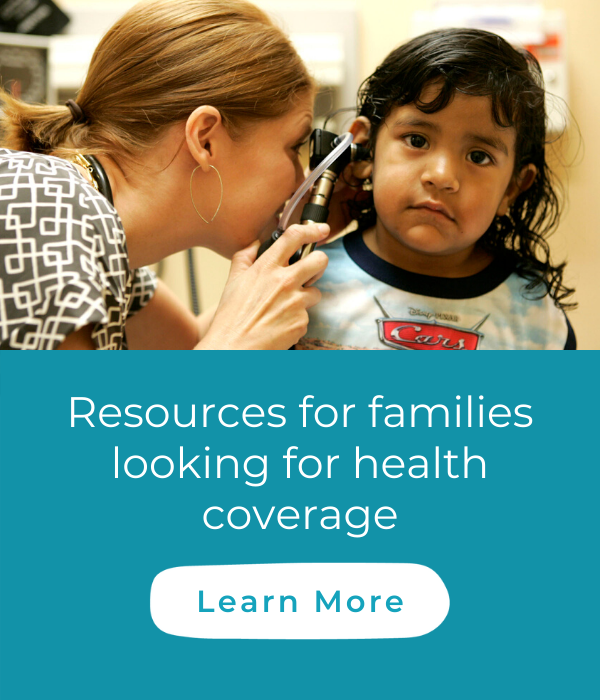In March 2021, the American Rescue Plan passed and ushered in a historic one-year expansion of the Child Tax Credit (CTC) that lets parents pay for the things they know their family needs on a monthly basis. This monthly CTC has expired—but we are fighting hard to ensure that we make the most of this momentum and pass a permanent and inclusive child allowance, which would ensure that families can make ends meet and take care of their children.
In the meantime, we have outlined what you need to know about the CTC in 2022 and how to ensure that your family gets the money that is owed to them.
Quick links:
We Need Your Voice
By joining today, you will receive email updates about our work to fight for children and ways you can help.

Child Tax Credit: Frequently Asked Questions
The Child Tax Credit (CTC) helps families with the high cost of raising children. It has historically been claimed at the time that a parent or caregiver files their taxes, and it has also been seriously flawed: millions of families did not previously qualify for the CTC because they earned too little. The American Rescue Plan, signed into law on March 11, 2021, expands and improves upon the CTC for one year, making it available to the 23 million children—disproportionately Black and Latinx children—who were previously left out.
The American Rescue Plan also changed the way that the benefit will be available to families: instead of having to wait until they file their taxes in 2022, families were able to get a monthly cash benefit that started on July 15, 2021 and ended on December 15, 2021.
Yes, if you qualify. Even if you missed out on the CTC monthly payments last year, or chose to opt-out of monthly payments, you can still get the full cash benefit if you file your 2021 taxes this year.
Even though the April 18 tax filing deadline has passed, you may still be able to file and claim the credit if you were not required to file federal taxes or filed for an extension. If you are still allowed to file, you may claim the CTC either by filing a full tax return or using the GetCTC sign-up tool.
For families filing for the first time, or those who need help completing their forms, free resources for support are available:
- Visit GetYourRefund.org to learn about your eligibility and how to get the credit when filing your 2021 tax return or be connected to an IRS-certified volunteer for support.
- Call 211 to be connected with local IRS-certified free tax filing assistance or virtual help.
- Go in person to an IRS’s Volunteer Income Tax Assistance (VITA) site. VITA is generally available to people who make $57,000 or less, those who have disabilities, and those who speak limited English.
- For support with tax issues, find your local Low-Income Taxpayer Clinic for free legal help on tax issues with the IRS, or make an appointment with your local Taxpayer Assistance Center.
- Use the IRS Free File, which is available to people whose income was $72,000 or less in 2021 and who do not need as much hands on support filing taxes.
For more information, click here or use our flyer.
The GetCTC tool is the easiest way to claim the CTC, but It is also only available to families making up to $25,000. While GetCTC is fast and easier to use, if you are worried about a dependent that could be claimed by someone else or are eligible for other tax benefits such as the Earned Income Tax Credit (EITC) this might not be the best option for you.
We encourage all families to file their taxes as soon as possible. The earlier you file, especially electronically, the faster you can get your CTC total amount.
No. Receipt of the CTC will not affect the immigration status of any member of the family who gets the credit. To be eligible, a child must have an SSN, but a parent or caregiver is only required to have an Individual Taxpayer Identification Number (ITIN) in order to claim the credit for your eligible child. Click here for more information.
Most families with children qualify. Families in the U.S. and territories qualify for newly expanded CTC. Married couples filing jointly making up to $150,000, single Head of Households making up to $112,500, and everyone else making up to $75,000. If you have questions about your eligibility, visit: https://www.irs.gov/credits-deductions/2021-child-tax-credit-and-advance-child-tax-credit-payments-frequently-asked-questions for more information.
No, parents and caregivers do not need any income to qualify for the expanded CTC.
A child must have a SSN to be eligible for the CTC. A parent or caregiver is not required to have a SSN to claim the credit, however you must have an Individual Taxpayer Identification Number (ITIN) in order to claim the credit for your eligible child. Mixed immigration-status families may find this fact sheet helpful for more information on the CTC, including how to get an ITIN if you don’t already have one.
If your child lived with you for at least half of 2021, you can still claim the remaining portion of the CTC and you will not be required to pay back your advance payments, even if the child in question no longer lives with you. If your child did not live with you for at least 6 months in 2021 and claimed the monthly CTC last year, you are not eligible to claim the CTC and you might have to repay your advance CTC payments. Under the CTC’s safe harbor provisions, families with low to moderate income are protected from some or all repayment requirements. Families earning less than the following amounts in 2021 will not have to repay anything: $40,000 for single filers; $50,000 for head of household; and $60,000 for married filing jointly.
The Child Tax Credit is not considered income for any family. It will not affect your Medicaid, SNAP/Food Stamps, TANF Cash Assistance, SSI, SSDI, Unemployment Insurance, Section 8, or Public Housing.
Not currently. This is a temporary expansion of the CTC that applies only for tax year 2021. Advance monthly payments expire at the end of 2021, but you can still get the full value of the CTC at tax time this year.
The Children’s Defense Fund is fighting hard to ensure that Congress takes additional action and pass legislation that includes a permanent expansion and other critical improvements to the CTC.
The one-year expansion of the CTC and the advance monthly payments that ran from July through December 2021 have substantially reduced the national child poverty rate. In December 2021, the CTC kept 3.7 million children out of poverty, a roughly 30 percent reduction in the child poverty rate.
For more information on general Child Tax Credit information, use the White House’s website: https://www.whitehouse.gov/child-tax-credit/
Looking for more information?
Check out our “Understanding the Expanded Child Tax Credit” blog post for the answers to additional questions you may have and, if you did not file your taxes in 2019 or 2020, review our resource on using the Non-Filer Sign Up Tool to get your benefit.
What parents and caregivers are saying
We’ve been asking parents and caregivers who will be eligible for the expanded Child Tax Credit (CTC) to tell us what it will mean for them and their families. Here’s what a few of them have said:
“[I am] a person who works 40 hours a week in the medical field, who still cannot make ends meet. I do not get paid enough to comfortably feed my son. This will help me make those important grocery trips. It will mean I will not lose sleep at night wondering what bill I will have to skip this month to make sure my child is fed.”
“It would help to get the bills paid so I wouldn’t have to rent the room in my house out and my grandbaby/ foster child could have her own bedroom.”
“It would mean not having to pick up extra shifts, and more time with family.”
“This would benefit my family in so many ways, from having me and my kids eat more to providing him with transportation back and forth for school.”
“[It would mean] emotional relief knowing that I don’t have to worry about feeding and providing basic essentials for [my children].”
“It’s going to give my son a chance to participate in extracurricular activities that he otherwise would not be able to do so at this time.”
“I can use it to offset childcare cost so I can continue working as a single mom.”
“What I think of when the CTC monthly benefits start to roll out, I feel a sense of relief… I see this benefit helping me get by with groceries and gas.”

How will your family be impacted by the recent expiration of the monthly expanded Child Tax Credit?
On January 14, 2022 families should have received another monthly expanded Child Tax Credit (CTC) payment. Instead, because of the Senate’s failure to pass the Build Back Better Act, tens of millions of families must contend with the impact of losing this essential cash benefit amid a still-worsening pandemic and the sharpest increase in cost of living in four decades.
We want to hear from you: How will your family be impacted by the recent expiration of the expanded Child Tax Credit?
The expansion of the Child Tax Credit is a critical down payment on ending child poverty and advancing racial equity in America. Monthly payments have the potential to provide income stability, security, and flexibility for families.
But the hard-won expansion is only for one year, and we have to seize this moment and demand this guaranteed income for children is made permanent. Join us in the fight: take action today.
Useful Resources for Children and Families During the COVID-19 Crisis
Visit our COVID-19 hub to find resources for families seeking assistance, resources for immigrant families, education resources for parents and caregivers, and much more.

Support our ongoing work to ensure children and families will be even stronger on the other side of this pandemic.
Count me in!
Be a champion for every child. Sign up for updates about how we work to fight for children and ways you can help.







